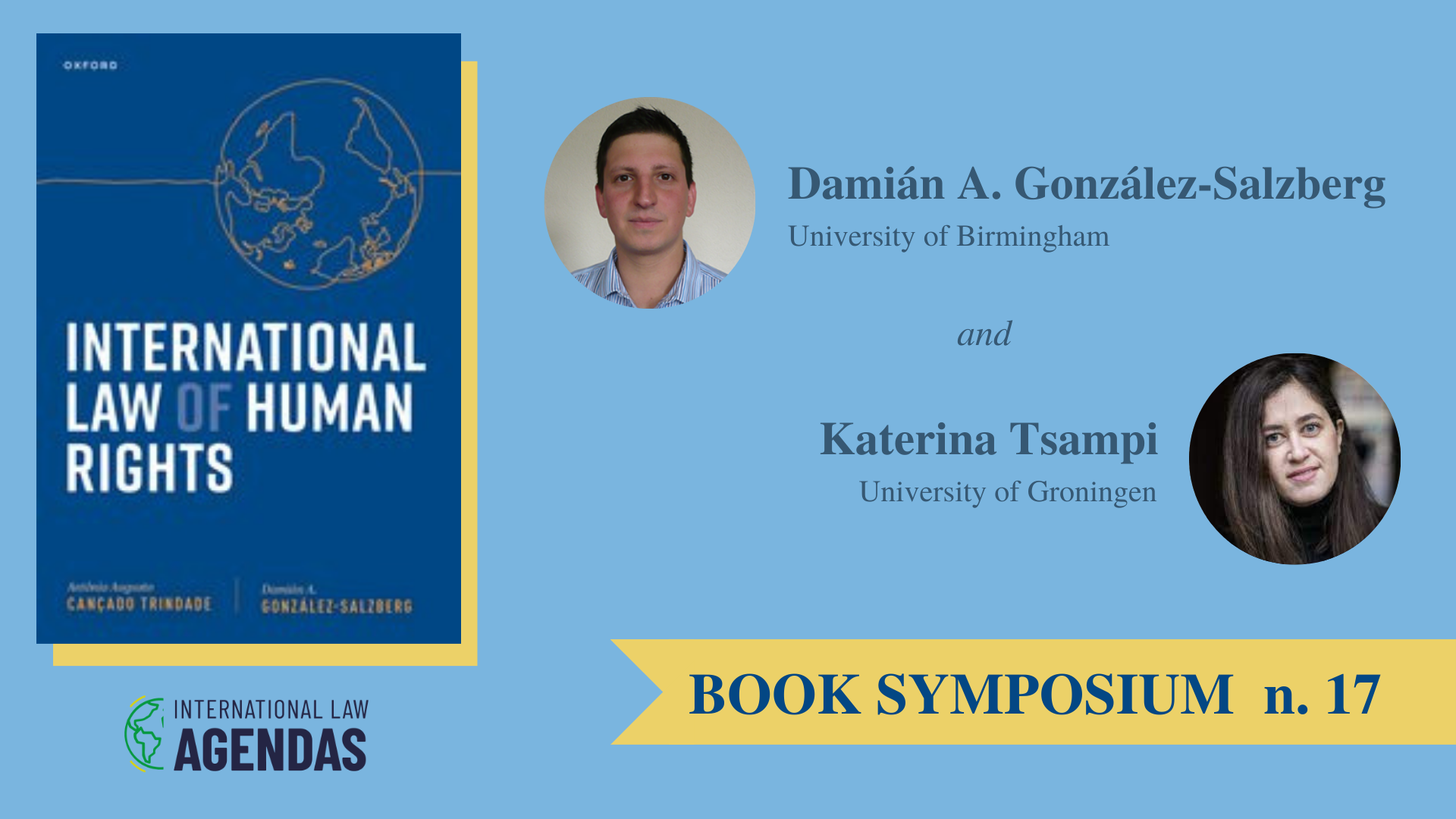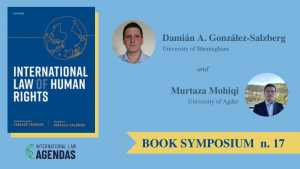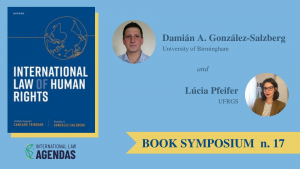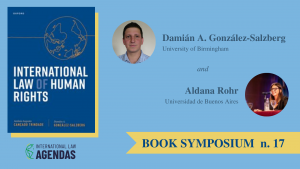Controversies in a book that uncontroversially belongs to its era
It is with great pleasure that I accepted to review the textbook on international human rights law written by two renowned human rights scholars, Damian Gonzalez Salzberg and no other but the late Judge Cançado Trindade. I had the privilege to read the textbook prior to its publication as Oxford University Press (OUP) had asked me to review it while it was still in the pipeline. Reviewing a publication requires in principle assertion. However, in the case of this particular book, assertiveness alone wouldn’t suffice. This review necessitated humility too. Thus, I approached the manuscript shared with me by OUP not with one, but with five perspectives. I read it as a human rights scholar, as an academic lecturer, as a former practitioner, as a student from a different era, and as a hypothetical student of the current era.
Through all five lenses, this book belongs to its era. Remarkably, it comes from two authors who, admittedly, represent different generations of human rights lawyers. To affirm this truth about the book’s relevance to its era, I will delve into controversies it addresses — specifically, one dichotomy, one criticism, and the human rights critiques.
The dichotomy
I will begin with what I consider a very important contribution of the textbook, namely Section 2.3, which discusses the classification of human rights. I must apologize in advance for my flair for drama, a trait I stereotypically attribute to my Greek origins. Even before completing this section, I couldn’t help but exclaim: “Finally! This is so right!”. Contrary to this dramatic tone, the authors approached the topic with composed assurance. They convincingly asserted that “In our days, discussions over categories of rights should be abandoned in favour of reflections upon strategies for the expansion and strengthening of the protection of all human rights” (p. 87). I find it very important that a textbook takes such a clear position on the matter to dissolve an otherwise classic controversy in human rights literature. In a way, the ex-student in me found peace; it seems that we were right – when we were students ourselves – not to fully comprehend the teachings that propagated this dichotomy. The ex-practitioner in me also found solace; such clear assertions can possibly put an end to futile theorizing in rooms with policymakers who cling to divisive rights classifications. Also, the current teacher in me found a straightforward resource for her students on this particular point. Some of our analyses inadvertently contribute to perpetuating the outdated distinction between civil and political rights on the one hand and economic, social, and cultural rights, on the other hand, reflecting dated approaches to rights classification. Section 2.3 presents a fair argument against this distinction, offering a modern perspective on the classification of rights and insight into the diversity of regional systems. It is indeed noteworthy that the comparative view of different regional systems on the point reads very interesting. This section not only provides insights on the classification of rights but it also allows students to understand how treaty making in IHRL is progressing and what the diversity of the regional systems imply. In essence, this section holds multi-layered value, potentially modernizing human rights education and providing a solid foundation for understanding the diversity of regional systems.
Allow me to highlight two more points that particularly struck me, both as a scholar and through the lens of a hypothetical student of contemporary times.
The criticism
Firstly, I appreciate the analysis of the European Convention on Human Rights system and the margin of appreciation. While the book maintains a neutral and didactic tone, the authors take a step further by addressing the controversies surrounding the doctrine, drawing from views expressed by ECtHR judges (towards the end of section 7.7.1 on the scope of the margin of appreciation). This approach sparks interest in comparative discussions of the doctrine across international human rights systems and it would have been beneficial to the book to further delve into them with a view to make the analysis even more convincing. The doctrine of margin of appreciation is landmark for the ECHR system. The authors seem to have second thoughts about its relevance though and conclude the respective section of the book by observing that “[…] far from its dismissal by the Court, the doctrine of the margin of appreciation has become a textual part of the Convention with the entry into force of Protocol 15” (p. 415).
The human rights critiques
I will conclude with what I consider to be an important addition in a textbook that addresses the current generations of students. In its very first Chapter the book extensively discusses the most prominent critiques in human rights law. Considering a number of relevant sources on the field, the authors make sure to first very clearly enunciate what is a critique in itself: “[…] a critique is a type of analysis that focuses on generally held assumptions that underpin a given field or discipline, such as human rights, confronting them with either its own orthodox discourse or with external ones, to bring attention to problems, inconsistencies, conflicts, or ambiguities [sic], that usually go unproblematized” (p. 39). The selected critiques in the textbook are those grounded on Marxist, feminist, postmodern, and postcolonial theories. While we may debate the role of critical studies in international law curricula, we cannot ignore the importance of exposing students to human rights critiques. The current textbook generously offers a comprehensive, concise and accessible overview of the most prominent human rights critiques already from the outset. Placing this overview already at the beginning of the book seems to be pertinent not only from a practical but also from a symbolic point of view: as times change, our understanding of the law changes too. Our textbooks change too.
Considering all the aforementioned, together with the textbook’s aspiration to take a Global South perspective, “International Law of Human Rights” by Judge Antônio Augusto Cançado Trindade and Damián A. González-Salzberg can be considered a modern toolkit in our quest for understanding human rights today and in our mission to educate the future generations of human rights lawyers.
-

Dr. Tsampi is currently Assistant Professor of International Law at the University of Groningen and member of the Netherlands Network for Human Rights Research (NNHRR). She is founding member and editor of the NNHRR blog, Human Rights Here. Her post-doctoral research focused on tobacco control and human rights under the auspices of Groningen Centre for Health Law. Her current research interests revolve around islandness and human rights.





